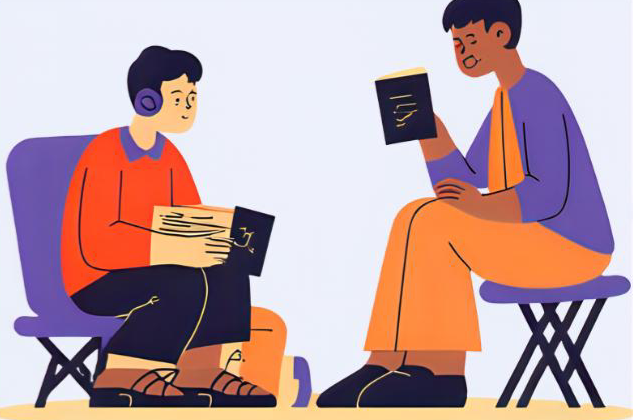Do you ever want to talk about tomorrow, next week, or even next year in English? Learning how to talk about the future is very important! The good news is, there are two common ways to talk about the future in English: will and be going to. In this post, we’ll focus on be going to. To learn more about using will, check out this guide. English learners use the future tense with Be Going To every day to make predictions, share plans, and even promise to do something. In this post, you’ll learn how to use the future tense with Be Going To step by step—with simple rules, examples, and common mistakes to avoid. By the end, you’ll be ready to talk about your own future in English with confidence!
When do we use the future tense with Be Going To?
We use Be Going To to talk about:
- Simple facts about the future
I am going to finish class on Friday.
- Predictions with evidence (when we can see something now).
Look at those clouds! It is going to rain.
- Plans or intentions (things we already decided to do).
She is going to study English at UNAM next session.
Affirmative Statements in the Future Tense with Be Going To
Subject + be (am/is/are) + going to + base form of the verb
I am going to watch a movie tonight.
She is going to travel to Spain.
They are going to play basketball on Thursday.
My mother is going to make dinner tonight.
The students are going to take a test on Friday.
Ana is going to celebrate her birthday on Saturday.
Negative Statements in the Future Tense with Be Going To
Subject + be (am/is/are) + not + going to + base form of the verb
I am not going to watch a movie tonight.
She is not going to travel to Spain.
They are not going to play basketball on Thursday.
My mother is not going to make dinner tonight.
The students are not going to take a test on Friday.
Ana is not going to celebrate her birthday on Saturday.
Contractions in the Future Tense with Be Going To
In English, we often make sentences shorter by contracting the Be verb (am, is, are) with a subject pronoun. This makes speaking sound more natural.
I am → I’m → I’m going to study tonight.
You are → You’re going to fail if you don’t do the homework.
He is → He’s → He’s going to play soccer.
She is → She’s → She’s going to cook dinner.
It is → It’s → It’s going to rain.
We are → We’re → We’re going to travel next week.
They are → They’re → They’re going to visit us.
We can also contract the be verb (am, is, are) with not in negative sentences.
is not → isn’t
She isn’t going to eat lunch.
are not → aren’t
They aren’t going to play soccer.
❌ I amn’t going to study.
✅ I’m not going to study.
❌ She going to study tomorrow.
✅ She is going to study tomorrow.
❌ They are going study tomorrow.
✅ They are going to study tomorrow.
❌ I am not going study English.
✅ I am not going to study English.
❌ I amn’t going to study.
✅ I’m not going to study.
Yes/No Questions and Short Answers in the Future Tense with Be Going To
Be (am/is/are) + subject + going to + base form of the verb?
Are you going to do your homework?
Is it going to rain tonight?
Is she going to visit her parents?
Are they going to eat lunch at Taco Bell?
Are the students going to celebrate the teacher’s birthday?
Are we going to fly to Cancun?
Short Answers
Yes, I am. / No, I’m not.
Yes, you are. / No, you’re not. / No, you aren’t.
Yes, he is. / No, he’s not. / No, he isn’t.
Yes, she is. / No, she’s not. / No, she isn’t.
Yes, it is. / No, it’s not. / No, it isn’t.
Yes, we are. / No, we’re not. / No, we aren’t.
Yes, they are. / No, they’re not. / No, they aren’t.
Wh- Questions in the Future Tense with Be Going To
Wh- word + Be (am/is/are) + Subject + going to
When are you going to do your homework?
When is it going to rain tonight?
Why is she going to visit her parents?
What are they going to eat at Taco Bell?
Who are the students going to celebrate the teacher’s birthday with?
When are we going to fly to Cancun?
How are we going to pay for our vacation?
When making questions with be going to, many students forget to move the be verb (am, is, are) to the beginning.
Yes/No Questions
❌ You are going to watch a movie tonight?
✅ Are you going to watch a movie tonight?
❌ She is going to call you?
✅ Is she going to call you?
👉 Always put am/is/are before the subject in questions.
Wh- Questions
❌ Where you are going to eat lunch?
✅ Where are you going to eat lunch?
❌ What he is going to do tomorrow?
✅ What is he going to do tomorrow?
👉 Start with the Wh- word (What, Where, When, Why, Who, How) → then am/is/are → then the subject.
Let’s Practice!
Exercise A
Fill in the blank(s) with the correct word(s). Use contractions if possible.
- She ________ going to visit her grandmother this weekend.
- They ________ going to play soccer after school.
- I ________ not going to eat pizza tonight.
- He ________ not going to watch TV before bed.
- ________ you ________ to study for the test tomorrow?
- ________ she going ________ call her friend tonight?
- ________ they ________ come to the party?
- What ________ you ________ eat for lunch?
- Where ________ they ________ travel next summer?
- When ________ he ________ start his new job?
Exercise B
Correct the mistakes in each sentence. There is one mistake per sentence.
- She going to visit her friend tomorrow.
- They are going play basketball after school.
- I am go to study English tonight.
- He isn’t going to calls you later.
- We is not going to watch TV tonight.
- I amn’t going to eat dinner.
- You are going to come to class tomorrow?
- She is going to call her mom tonight?
- Where you are going to travel next year?
- What he is going to eat for lunch?
Scoring and Feedback
🔵 17 – 20 Correct
Excellent work! 🎉You really understand the future with Be Going To. Keep using it in your everyday conversations and writing.
🟢 14 – 16 Correct
Great job! ✅ You have a good understanding of the future with Be Going To. Review the ones you missed.
🟡 12 – 13 Correct
Good effort! 💪You’re learning, and that’s what matters. Take a moment to review the examples and do the quiz again.
🔴 0 – 11 Correct
No worries! 🌱 The future with Be Going To can be tricky at first. Go back and review the examples in the lesson.
Remember! Learning a language is not about perfection—it’s about progress. Every time you say “I am going to learn English!” you are using the future tense with ‘be going to‘ to tell the truth about your journey. Keep practicing, stay curious, and trust the process. You are moving beyond English to more opportunities, connections, and self-expression!



